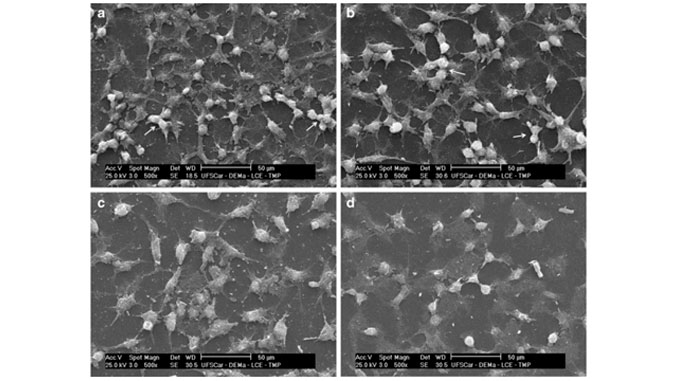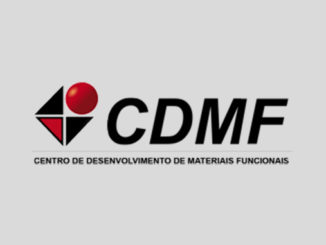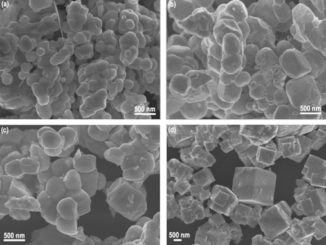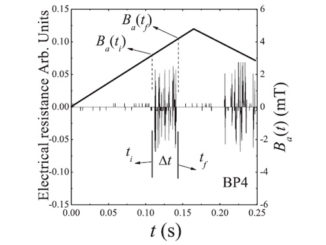
Writers: Ana Paula Dias Ribeiro; Ana Cláudia Pavarina; Livia Nordi Dovigo; Iguatemy Lourenço Brunetti; Vanderlei Salvador Bagnato; Carlos Eduardo Vergani; Carlos Alberto de Souza Costa
Keywords: MRSA; Photodynamic therapy; Curcumin; Fibroblasts
Abstract: Photodynamic therapy has been investigated as an alternative method of killing pathogens in response to the multiantibiotic resistance problem. This study evaluated the photodynamic effect of curcumin on methicillin-resistant Staphylococcus aureus (MRSA) compared to susceptible S. aureus (MSSA) and L929 fibroblasts. Suspensions of MSSA and MRSA were treated with different concentrations of curcumin and exposed to light-emitting diode (LED). Serial dilutions were obtained from each sample, and colony counts were quantified. For fibroblasts, the cell viability subsequent to the curcumin-mediated photodynamic therapy was evaluated using the MTT assay and morphological changes were assessed by SEM analysis. Curcumin concentrations ranging from 5.0 to 20.0 μM in combination with any tested LED fluences resulted in photokilling of MSSA. However, only the 20.0 μM concentration in combination with highest fluence resulted in photokilling of MRSA. This combination also promoted an 80% reduction in fibroblast cell metabolism and morphological changes were present, indicating that cell membrane was the main target of this phototherapy. The combination of curcumin with LED light caused photokilling of both S. aureus strains and may represent an alternative treatment for eradicating MRSA, responsible for significantly higher morbidity and mortality and increased healthcare costs in institutions and hospitals.
See PDF: Phototoxic effect of curcumin on methicillin-resistant Staphylococcus aureus and L929 fibroblasts
DOI: 10.1007/s10103-012-1064-9




